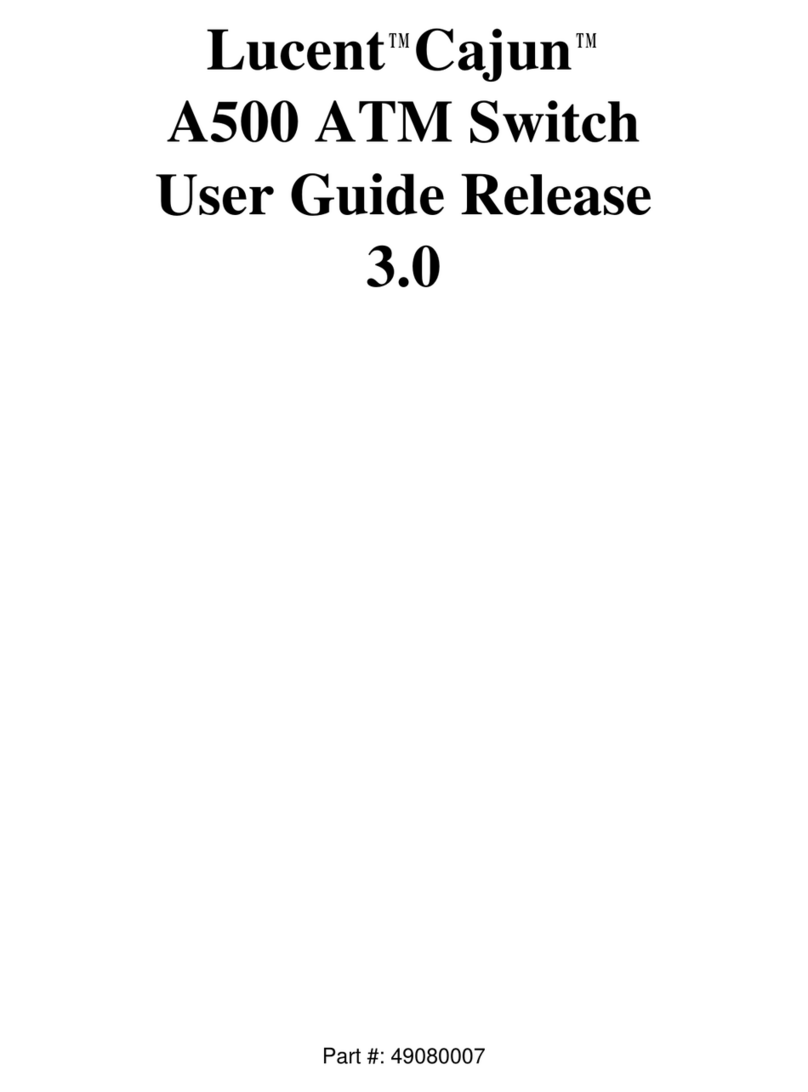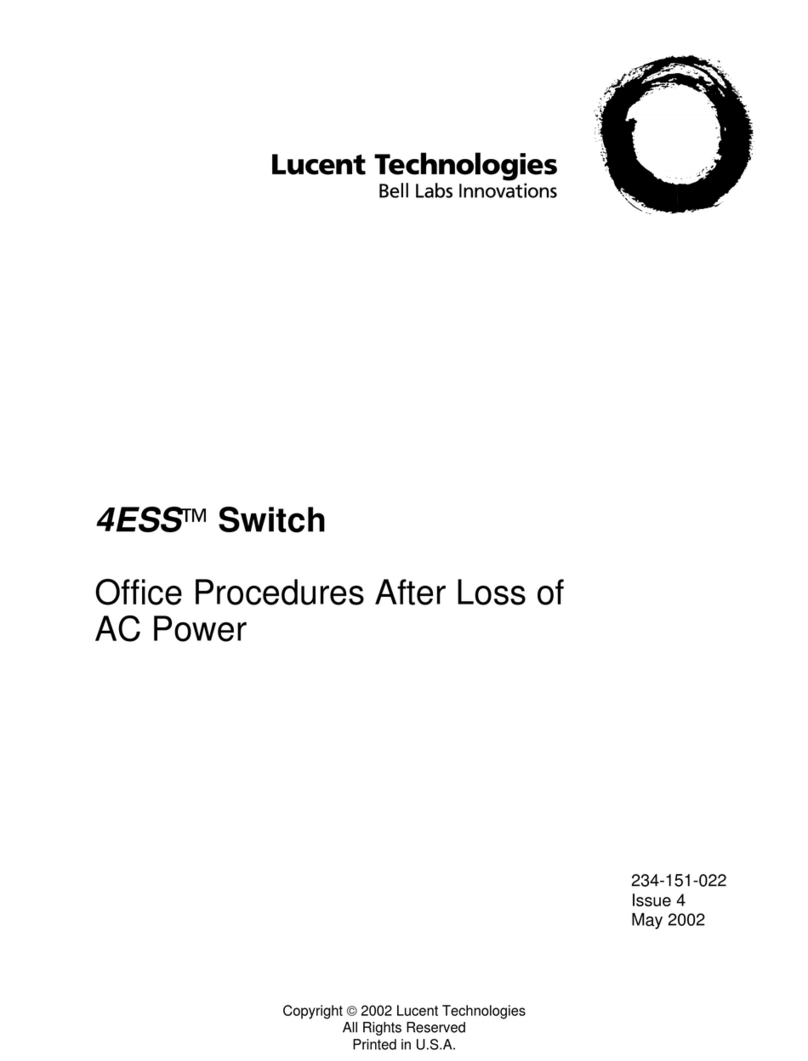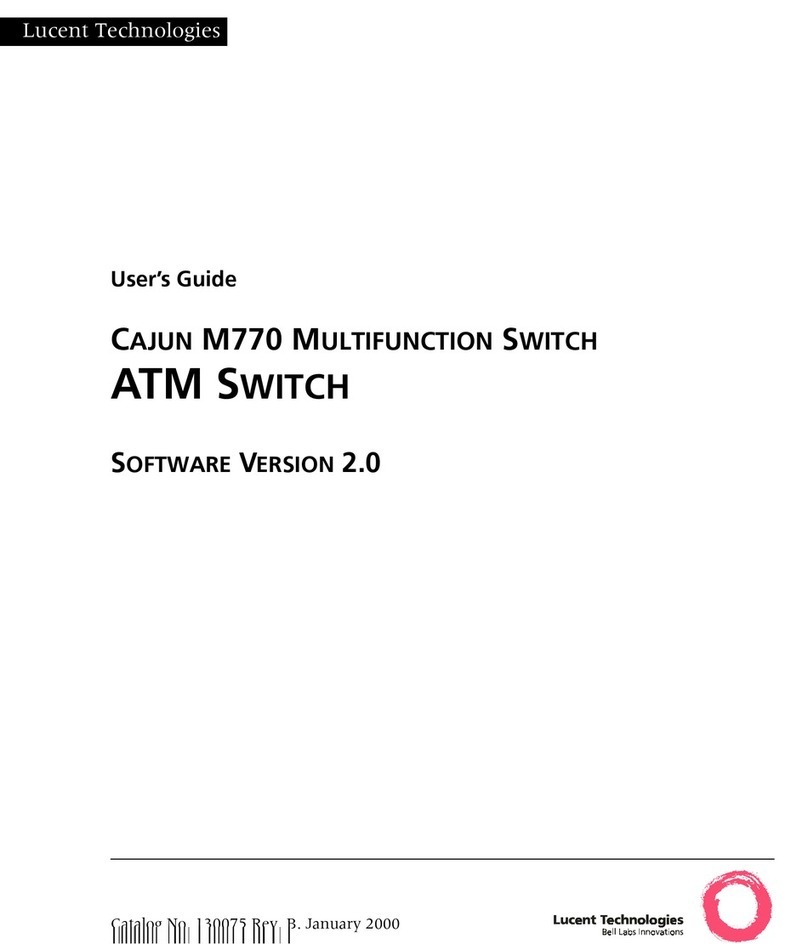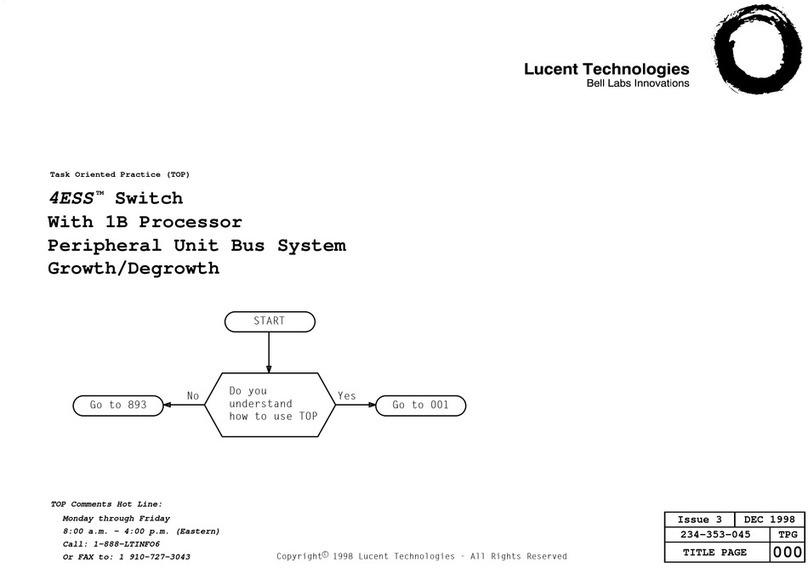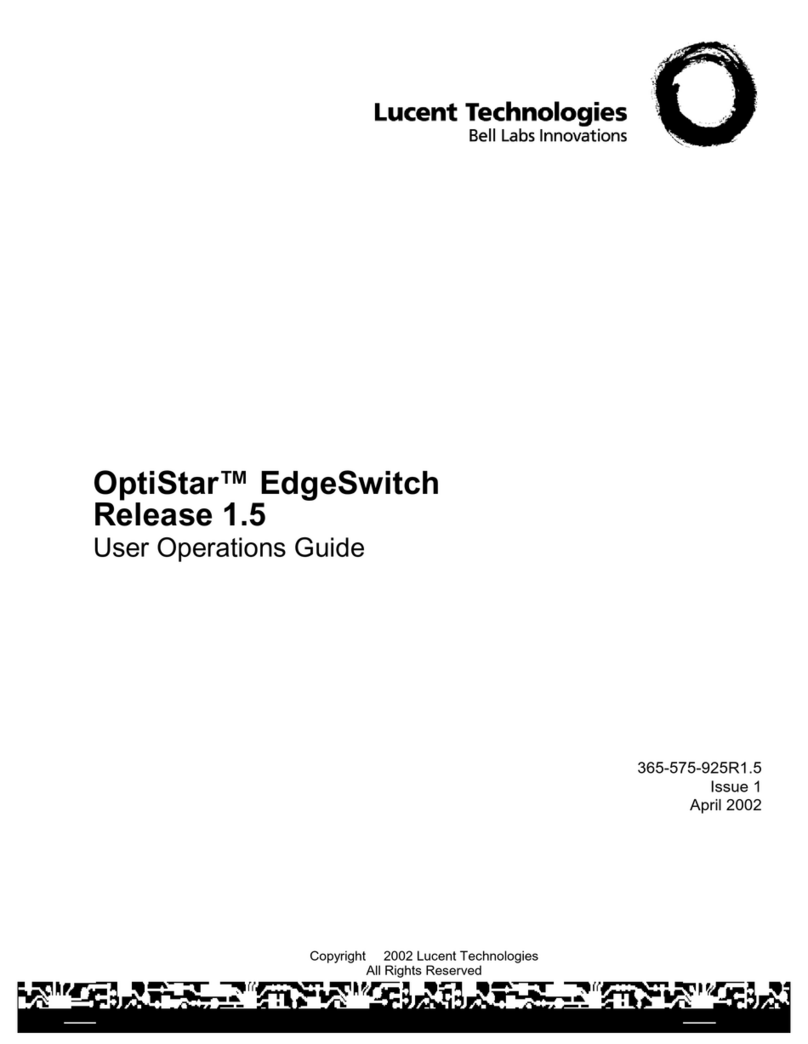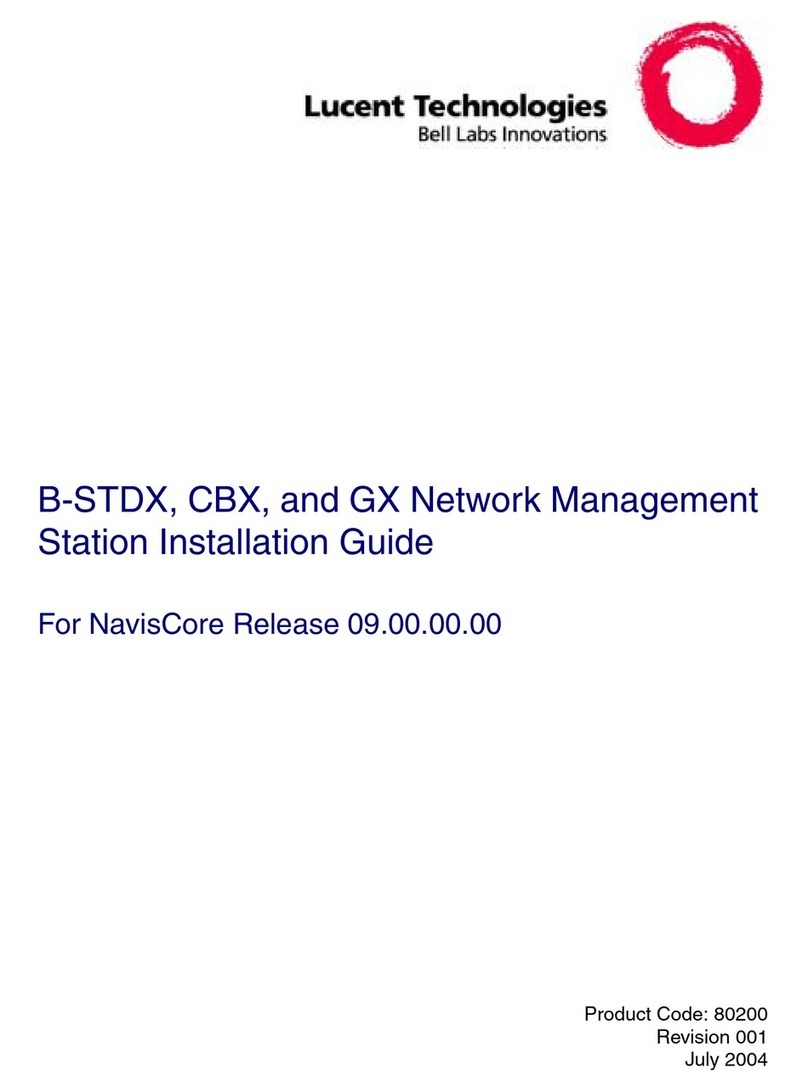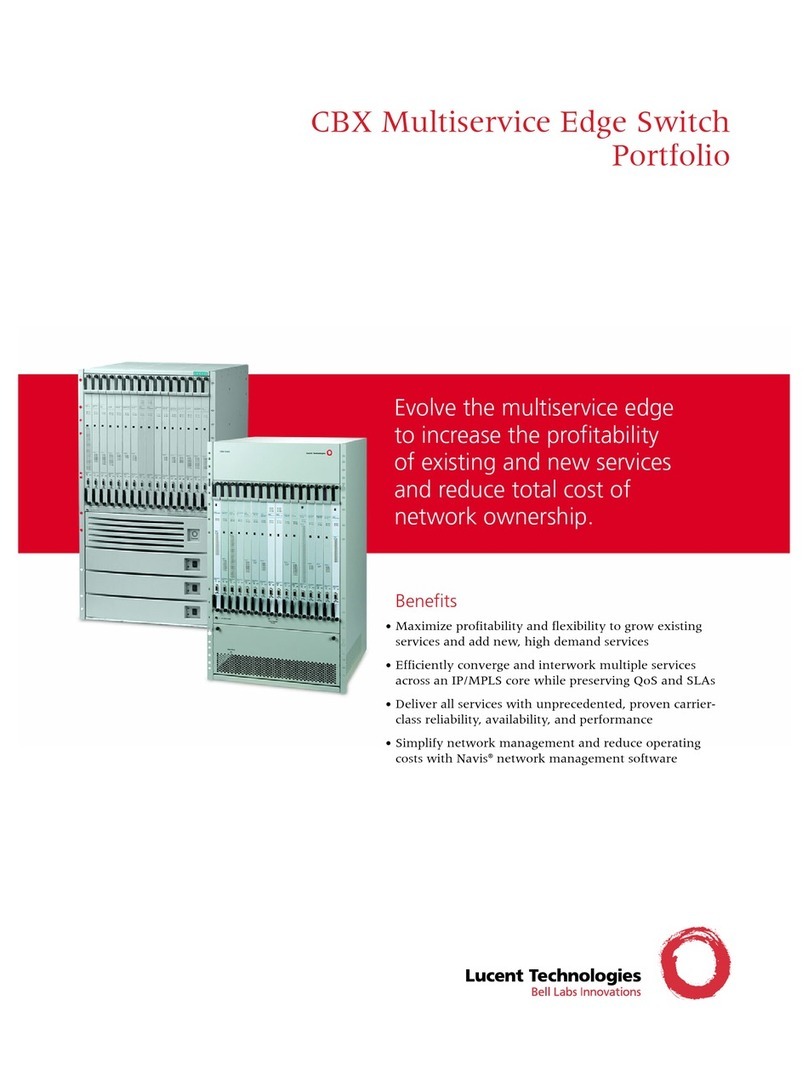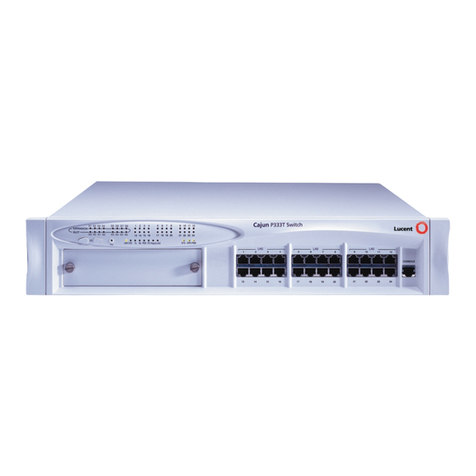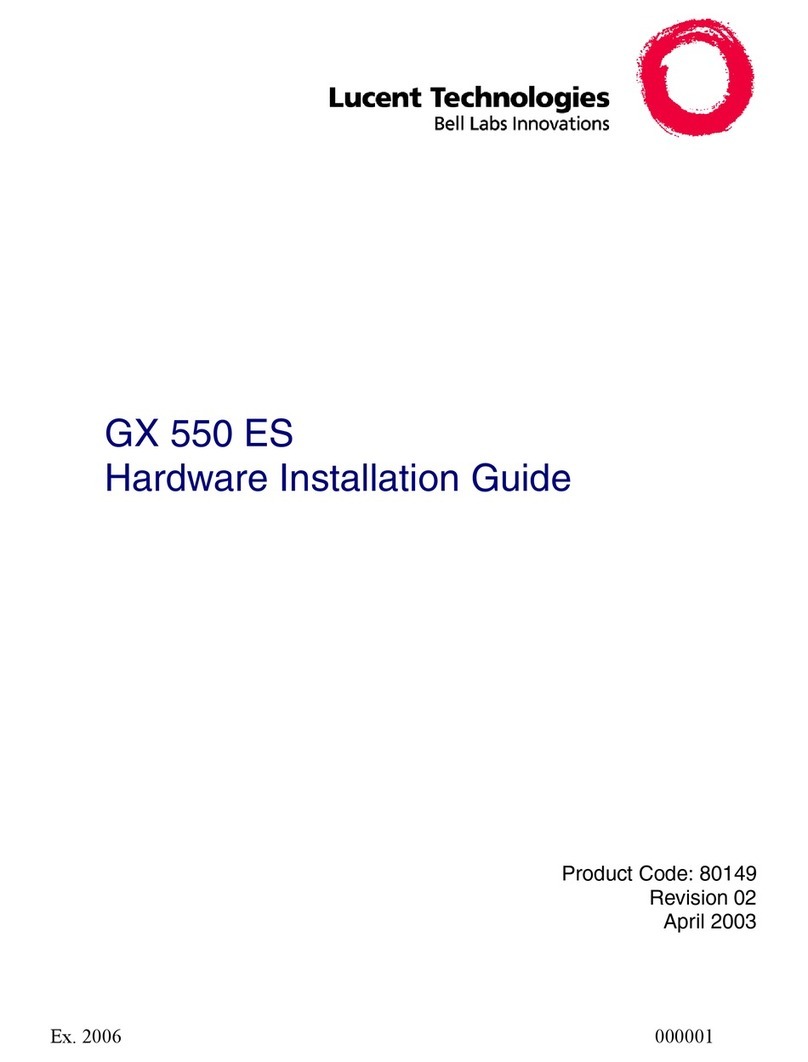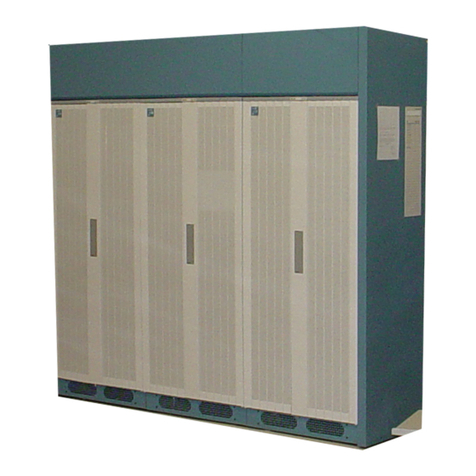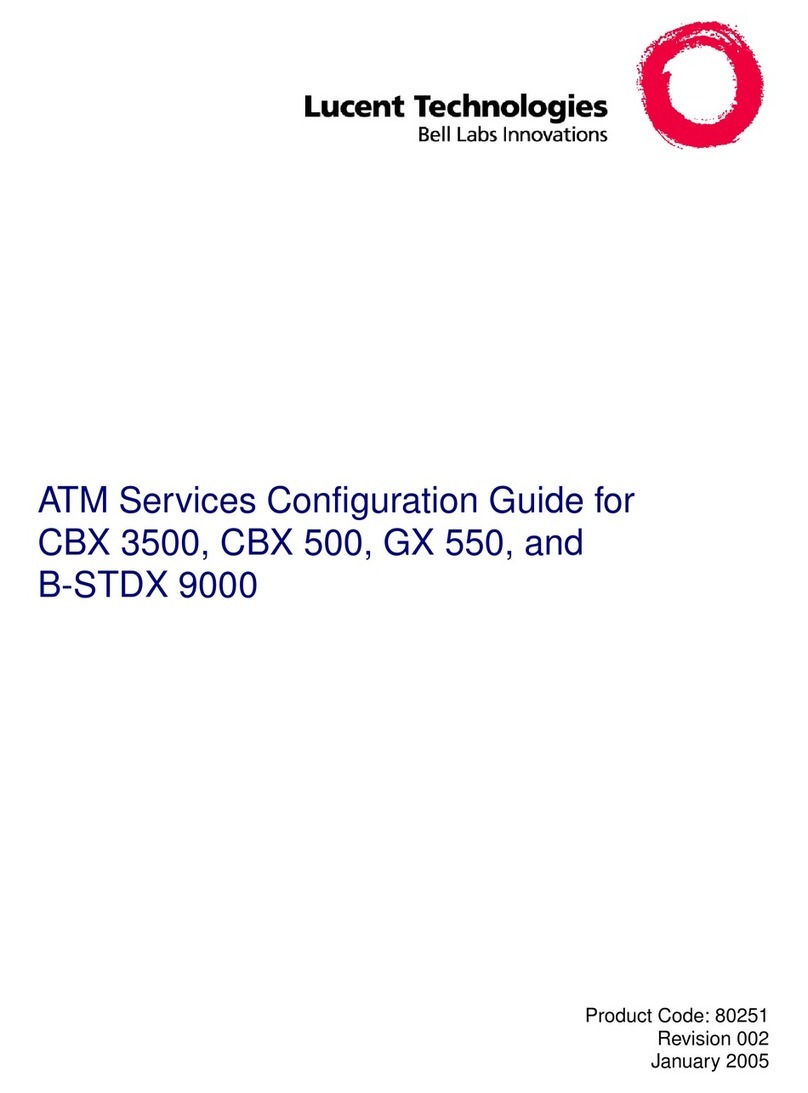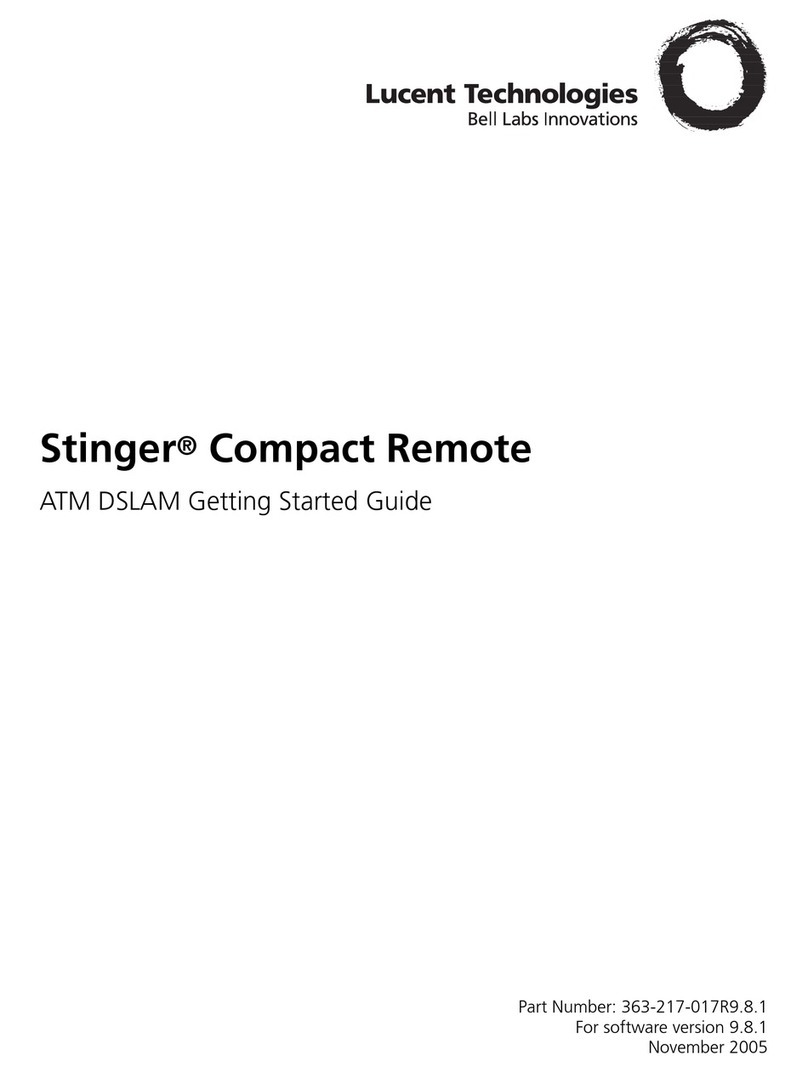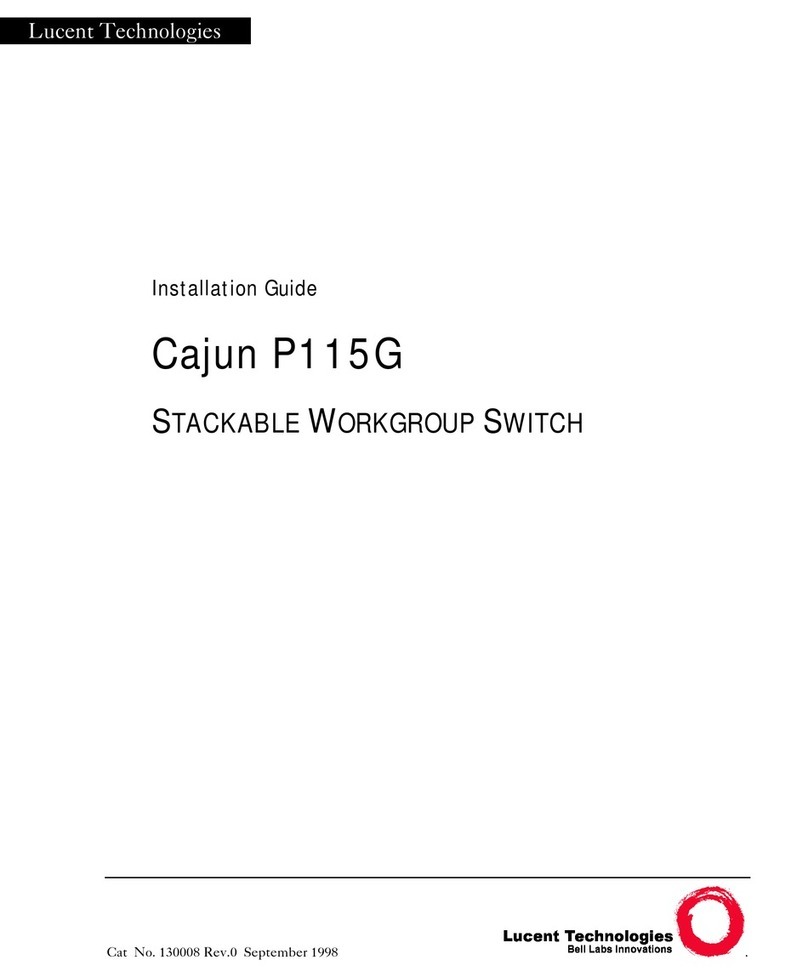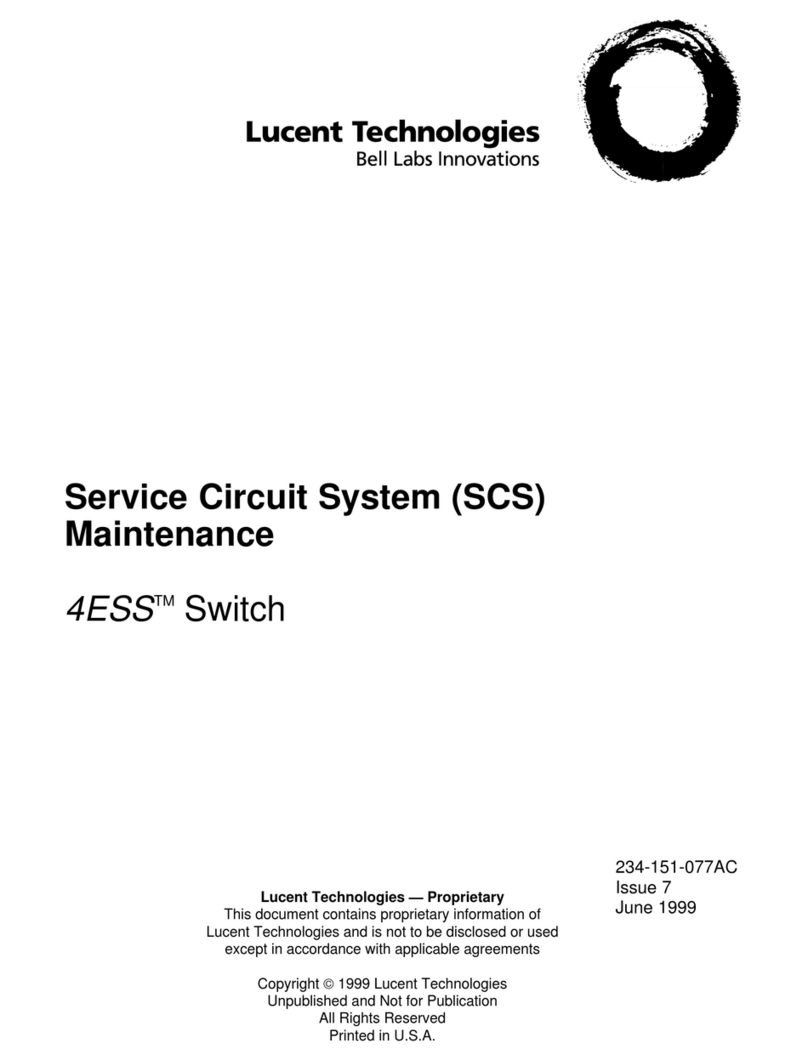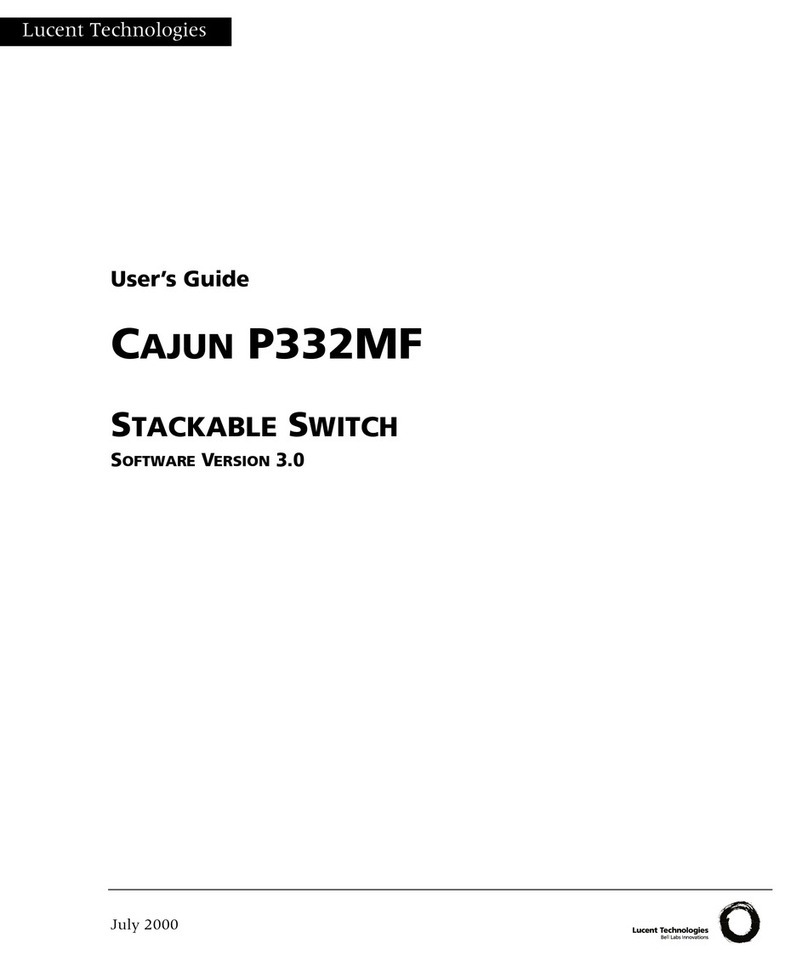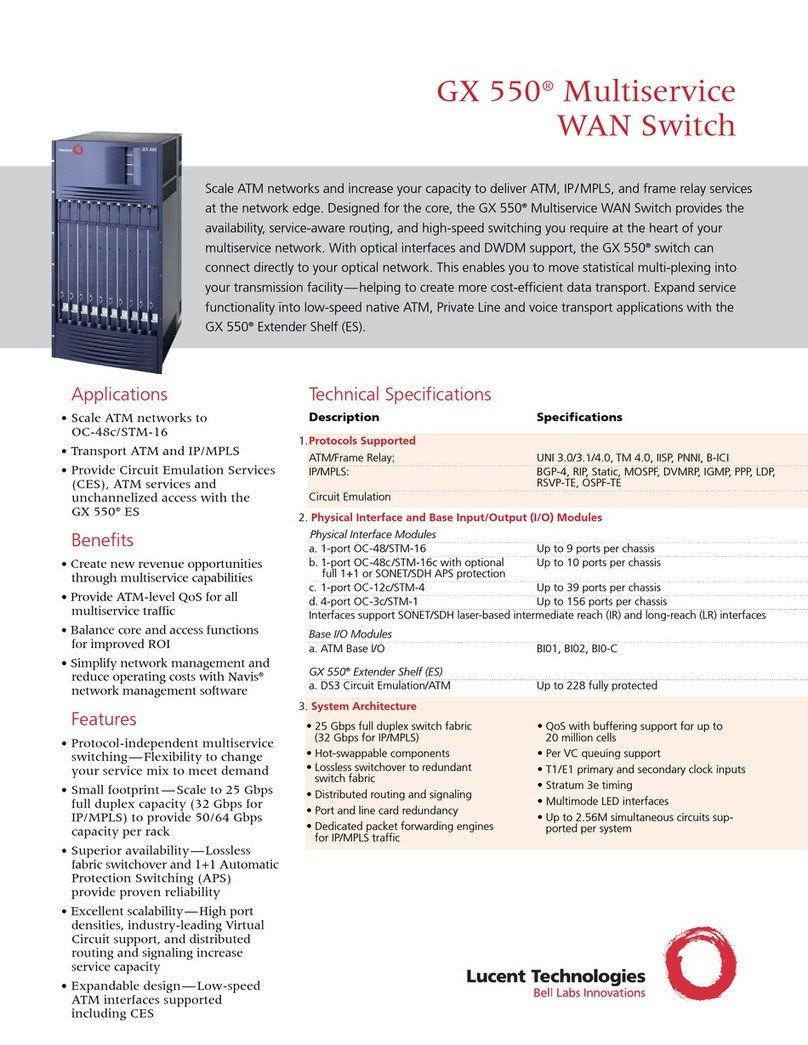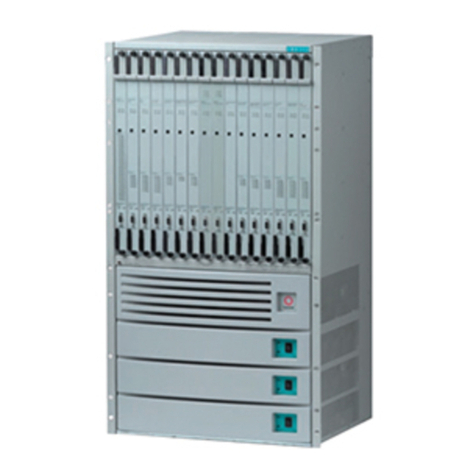
The task index list (IXL) is structured to provide fast
access to the directly accessible procedures contained
within this TOP. Procedures not listed on the IXL are
designed to support the directly accessible procedures
with preconditioning and system restoration steps covered
designed to be directly accessed are a threat to equipment
operation and may compound trouble-clearing problems when
at a point in trouble clearing when analysis of a problem
is complete (the faulty component and/or condition
determined) and only the corrective action is required.
This situation requires special attention since most
procedures in this TOP are designed to both isolate and
clear the problem. If the TOP is entered under these
conditions, it is the sole responsibility of the user to
verify that the correct entry point on a directly
accessible procedure is identified. Otherwise, equipment
damage and/or interruption to service is possible.
Non-Trouble Procedures (NTPs)
Trouble Analysis Diagrams (TADs)
Trouble Analysis Procedures (TAPs)
Detail Level Procedures (DLPs).
knowledgeable and experienced personnel may access this TOP
Task Index List (IXL)
documented using Task Oriented Practices (TOPs). The TOP
written for both the experienced and inexperienced
maintenance personnel with appropriate bypassing
techniques built into the procedures. Therefore, when
using procedures written for personnel with different
experience levels, it is the responsibility of the user to
make the determination as to what their experience level
is and whether it is necessary to access the detail as
personnel to bypass the detail provided to complete
specific steps, it is assumed that the step is performed
correctly.
All procedures directly accessible from the IXL are
referenced. However, if it is determined by experienced
in those level procedures. Therefore, procedures not
accessed using a hunt-and-find method.
The more
contained in this Task Oriented Practice (TOP) are based
and improvements to the data are encouraged. Manufacturer,
XTSI CABINET DOCUMENTATION
software and test equipment employed. The procedures are
these procedures accomplish this depends upon input and
feedback from the user. Submittal of additions, corrections
engineering and software documentation such as Input/Output
XTSI CABINET TROUBLE CLEARING DOCUMENTATION STRUCTURE
is structured using different elements to present different
types of TOP procedures. These elements include:
(I/O) message manuals and schematic diagrams (SDs) which
The preventive maintenance and trouble-clearing procedures
upon the design of XTSI cabinet hardware, diagnostic
intended to aid personnel in performing routine preventive
maintenance trouble-clearing functions required to keep the
XTSI cabinet functional and trouble free. The degree to which
The XTSI cabinet trouble-clearing documentation is
Non-trouble procedures (NTPs) are used to document routine
preventive maintenance and other maintenance procedures
that are not directly related to a specific trouble.
are available to the customer are referenced where applicable
rather than duplicating that information in the TOP.
However, some portions of this type of documentation may be
utilized in procedures as examples for the purpose of
explanation. Test equipment (oscilloscopes, voltmeters, etc.)
and the parameters involved in circuits being tested,
adjusted or checked are usually prescribed. However,
the setup and method of operation of such equipment is not
described unless it is unusual or unique in some manner.
NOTE: It is assumed that all coaxial cabling is non-faulty.
service interruption. Extreme care must be exercised
Improper handling of cabling may damage cables or cause
when handling any coaxial cable.
MAINTENANCE PHILOSOPHY
LUCENT TECHNOLOGIES PROPRIETARY - Use Pursuant to Company Instructions
TAD
Issue 2
100
JUN 1999
PAGE 2 of 4
234-351-011AC

